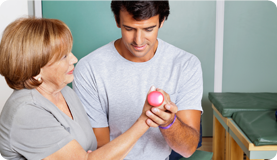I’m sure you have been told that having high blood pressure is unhealthy but many don’t understand the dangers behind it. You may be a victim of high blood pressure and without realizing. Years before symptoms develop high blood pressure can silently damage your body. If symptoms are ignored you may wind up with a disability, poor quality of life or even the worst case scenario, a fatal heart attack.
High blood pressure damages many organs inside your body. The effect is like dominos falling on each other, causing an unfortunate chain link of events. High blood pressure is damaging to your arteries, the lining of your artery becomes narrowed. The cause of hardened arteries is from high blood pressure. Fats that enter your body, which blocks the flow of blood is what causes the artery to narrow. These events could lead to an aneurysm that could rupture possibly causing life threatening internal bleeding.
But wait; there are more negative events to be caused. It directly affects to your heart and may cause coronary artery disease, an enlarged left heart and even heart failure. Coronary artery disease is caused by the lack of blood flow in your heart. An enlarged left heart is caused by the heart overcompensating itself to pump blood to the rest of your body. It also damages your brain and your kidneys.
The good news is that you are the captain of your own ship. You can help reduce your own high blood pressure without the use of medication. The more weight you lose the lower your blood pressure. You can reduce your blood pressure by losing 10 pounds. At least 30 to 60 minutes of regular physical activity can lower your blood pressure by 4 to 9 millimeters of mercury (mm Hg). Increasing your exercise level can reduce your blood pressure within a few weeks. Low-fat dairy products and skimping on saturated fat and cholesterol can lower your blood pressure. Whole grains, fruits and vegetables should be incorporated in your diet. Your blood pressure can be reduced by 2 to 8 (mm Hg) by a small reduction of sodium in your diet. Alcohol can raise your blood pressure by several points if you don’t consume in moderation.




